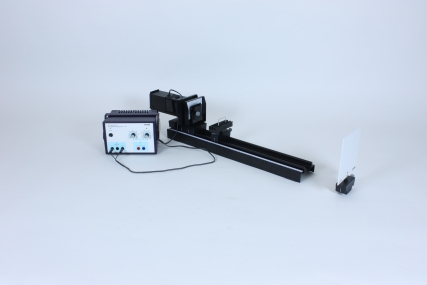Principle
Along with the Fresnel double mirror experiment, this experiment with a Fresnel biprism is another one of historical significance which was performed in the 18th and 19th centuries to demonstrate the wave theory of light.
The surface of the Fresnel biprism strucked by the light emitted from a light aperture encompass an angle of almost 180°. If a diverging beam of light strikes the edge of the biprism, two diverging coherent light beams are created which appear to emerge from two virtual slits and interfere on the far side of the biprism. The students should first make themselves familiar with the general setup of the Fresnel experiment and describe the interference patterns.
In the second experiment, the wavelength of red light is to be determined. The students can use the other colour filters (e.g. in groupwork), to ascertain the wavelength of further colours.
Benefits
- Multifunctional light box - All-in-one: Can be used for geometric optics on the table, colour mixing and on an optical bench
- Extension with others sets at anytime, no additional light sources needed, recognition value for students
Tasks
How can refraction bring about interference of light?
- Direct a narrow beam of light onto the blunt edge of a Fresnel biprism and observe what happens.
- Measure the distance between the virtual light sources and, using this and the interference pattern, determine the wavelength of red light.


